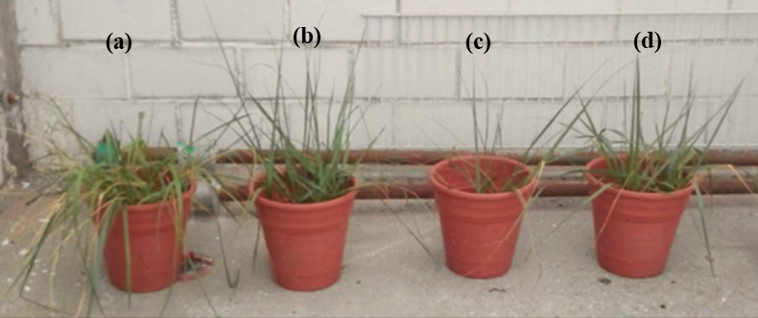 |
|
Endophyte assisted phytoremediation is an environmentally friendly alternative for the remediation and treatment of soils contaminated with heavy metals. The effect of the association between endophytic fungus (Lewia sp.) and Festuca arundinacea on the tolerance and accumulation of lead (Pb) was studied after 45 days of culture in contaminated soil. The tolerance to 2,500 mg Pb Kg-1 was quantified by biomass production and the accumulation of lead in shoots and roots. The phytoremediation potential was quantified by estimating the tolerance index (TI), the bioaccumulation factor (BCF) and translocation factor (TF). The Pb accumulation in roots (14 ± 4.2 mg g-1), was 3-fold higher in plants inoculated in comparison with only plant (3.73 ± 0.64 mg g-1); The TI was 0.76 and 0.56, the BCF was 0.31 and 0.23 for inoculated and non-inoculated plants, respectively. The TF was not detected in both cases, indicates that when working with this association there is not risk of trophic transfer of lead, according to parameters obtained, Lewia sp. improved growth and tolerance of F. arundinacea in Pb contaminated soil. The association between F. arundinacea-Lewia sp. can be considered a promising endophytic association for the remediation in situ.
Keywords: Tolerance, bioacumulation, Festuca arudinacea, Lewia sp., endophyte, lead.
|
|
 |

